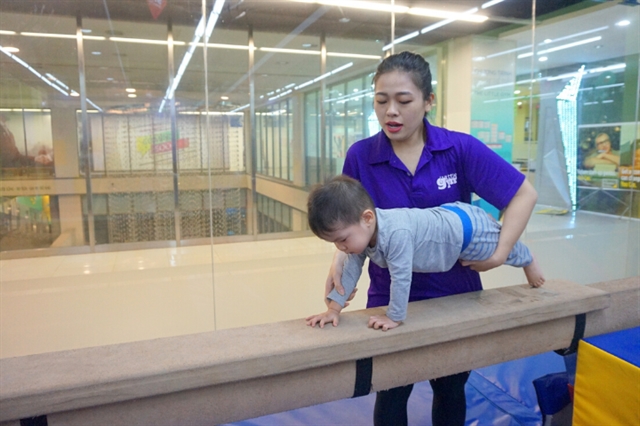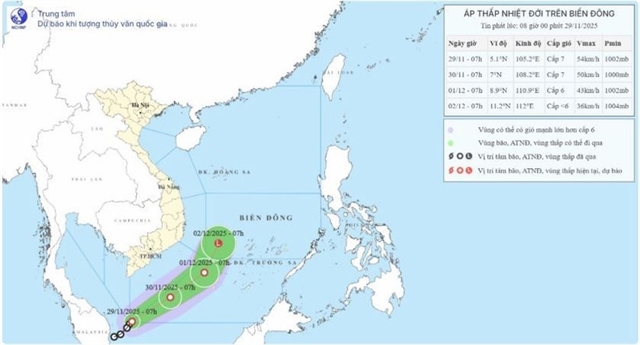 Life & Style
Life & Style


|
| Children under the age of five need three hours of exercise each day. Photo kiddi.vn |
By Abigail Marie Laurie
Did you know that children under the age of five need three hours of exercise each day?
A lot of parents are surprised when they hear this. Exercise for children supports a healthy heart, healthy weight, muscular fitness, bone health, mental health and supports cognition and academic attainment. We know that children exposed to healthy behaviours from the very beginning of life are more likely to sustain healthier lifestyles into adulthood (World Health Organization, 2020).
Three hours of exercise may seem overwhelming, however children can be active through play, games and leisure. From birth, babies require 30 minutes of tummy time a day, starting just for a few seconds at a time and building up to a few minutes several times throughout the day (NHS & WHO). Floor time and additional activities can then be introduced as the child becomes more mobile; learning to roll, sit, cruise and eventually walk.
After one year of age children require three hours per day of moderate to vigorous activity until they are five years old -- as stipulated by the World Health Organization (2019).
An additional point for parents to think about is the use of ‘containers’ such as slings, prams, highchairs and other baby equipment. It is recommended that children do not spend longer than one hour in one ‘container’ (WHO, 2019) and should be frequently rotated into different positions to ensure symmetrical development and reduce the risk of plagiocephaly (flat head).
Some types of ‘containers’ such as jump walkers and bumbo seat type products are not recommended due to the negative effects they can have on development (NHS, 2020). Therefore it is best to discuss containers and suitable equipment with a medical professional.
One example in detail is the baby walkers that allow a child to be positioned in a suspended seat with their tip toes touching the floor and wheels to facilitate them to move around. These are marketed to children under one when not independently walking and many parents may think they will support a child’s development. However the motion of walking and bouncing in these containers places a lot of pressure on the joints, bones and ligaments of the under-developed leg and increases the risk of injury and can promote toe walking in children. It can also delay developmental milestone achievement as children are not given as much opportunity for floor time and the promotion of independent walking. Therefore these are not recommended for physical exercise in children who cannot walk (American Academy of Pediatrics 2021).
So how could you encourage more physical activity for your little ones? This is more specific advice for children under five years old.
1. Reduce screen time
Under three years old zero hours of screen time is recommended. Over three years old a maximum of one hour per day is recommended under the supervision and support of a caregiver (WHO, 2019).
2. Move away from using baby equipment and allow your child to explore independently to develop new skills and remain active.
3. Get outside! Take your child to outdoor spaces and play everyday. When your child is walking, a shoe that is fitted correctly will support the foot. Aim to have around 1cm between the toes and end of the shoe to ensure they are not too tight which could affect growth and cause pain. The shoe should be firm around the heel but flexible around the sole. Slip on shoes are not recommended due to inadequate support to the foot.
4. Download apps or follow accounts from registered professionals/sites that provide information on physical development and activities for small babies to toddlers.
- Tots on target
- Born to Move NHS app
- Developmental Tracker CDC
- Milestones and motherhood
5. Depending on the age ensure that you provide age appropriate toys/games and opportunities to develop gross motor skills, i.e. a baby gym in the first few months has various lights, noises and toys positioned around it to encourage your little one to raise their head and see what is going on around them. Similarly when children are learning to roll, placing toys out of reach and lying with them on the floor encourages them to have confidence to roll.
6. Attend play centres and encourage child led play. Children are often keen to copy other children and through modelling and exploring together children master new skills. Children also enjoy physical play together and will exhaust themselves running around!
7. Model a physically active lifestyle for your children. The new guidelines for adults from the World Health Organization in 2020 state that any exercise is better than none but the previous recommendation of 150 minutes a week has changed to “all adults should undertake 150–300 min of moderate-intensity, or 75–150 min of vigorous-intensity physical activity. Therefore think about walking to locations throughout the day and naturally incorporating more activity throughout your day so children naturally grow up in an active environment; promoting a healthy life. Family Medical Practice
Family Medical Practice was the first foreign-owned primary healthcare provider in Việt Nam, and has consistently remained at the forefront of international-standard medicine since 1995. It offers extensive healthcare and emergency medical services nationwide to Vietnamese, expatriate and corporate customers.
For more advice on any medical topics, visit www.vietnammedicalpractice.com; or visit our clinics:
Family Medical Practice Hanoi on 298 I Kim Mã Street, Ba Đình District or call (024) 3843 0748. Email: hanoi@vietnammedicalpractice.com or
FMP’s downtown HCM City location is at Diamond Plaza, 34 Lê Duẩn Street, District 1; Other facilities are at: 95 Thảo Điền Street, District 2. Tel: (028) 38227848. E: hcmc@vietnammedicalpractice.com.
FMP Danang is located at 96-98 Nguyễn Văn Linh Street, Hải Châu District, Đà Nẵng. Tel: (0236) 3582 699. E: danang@vietnammedicalpractice.com.




